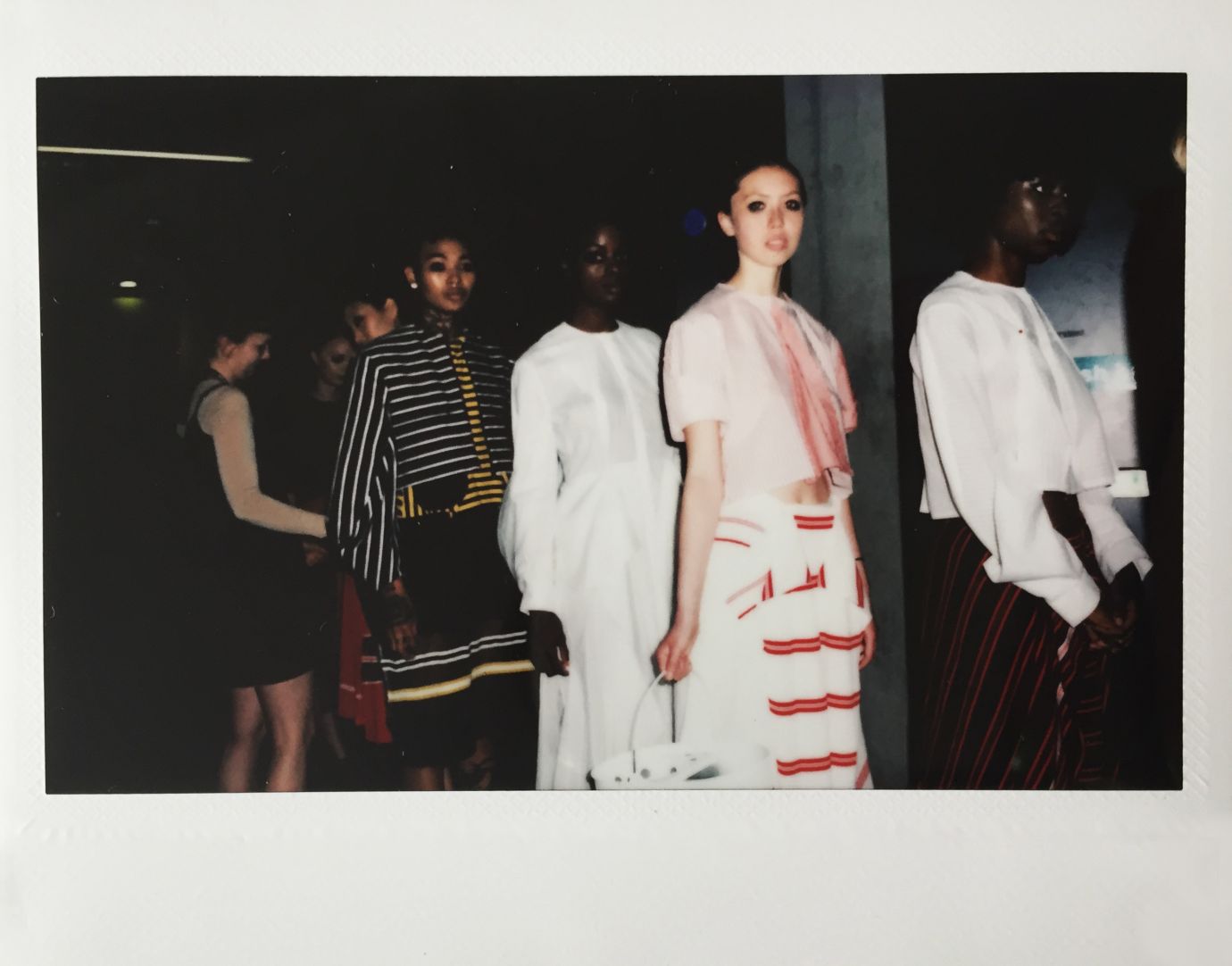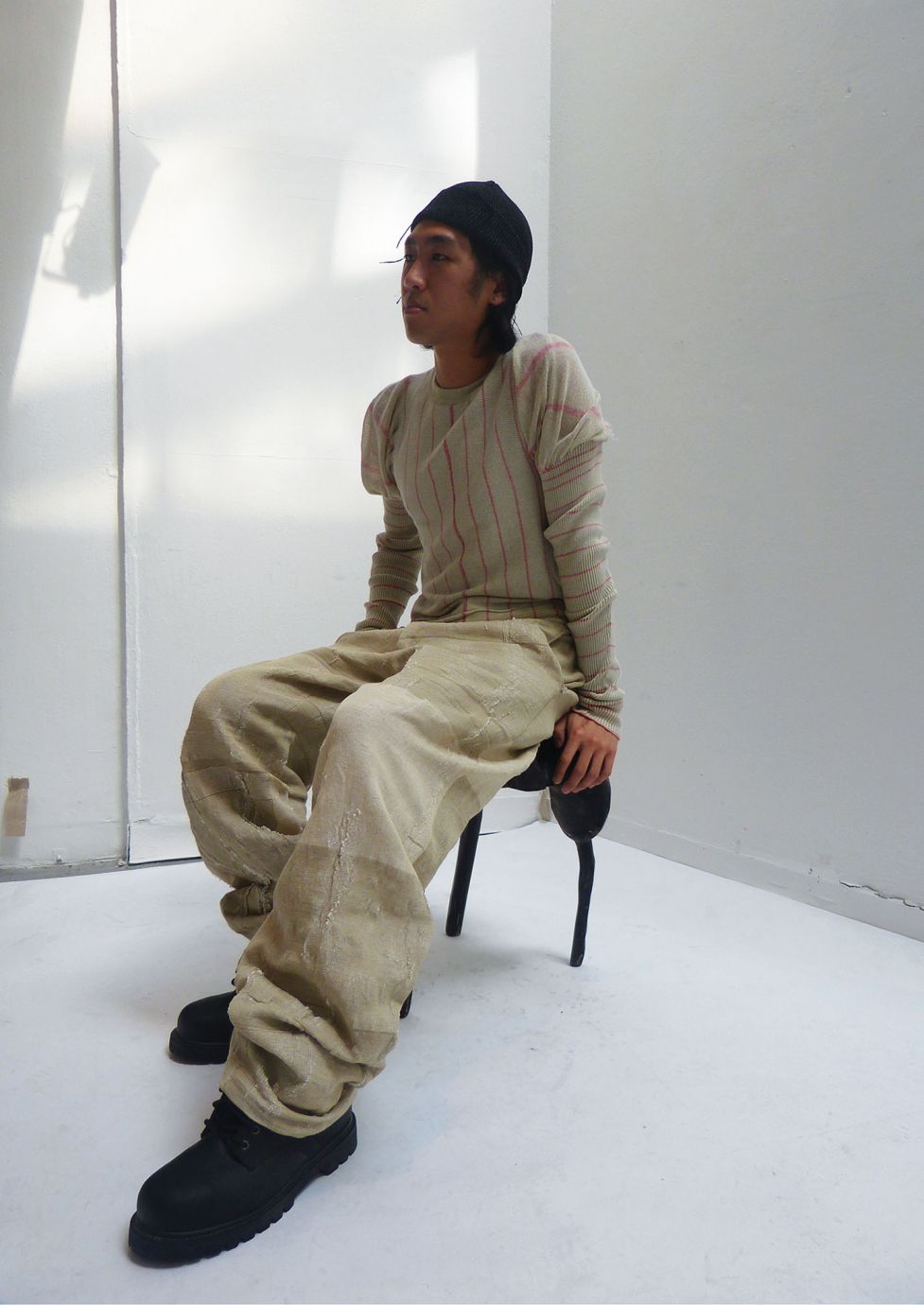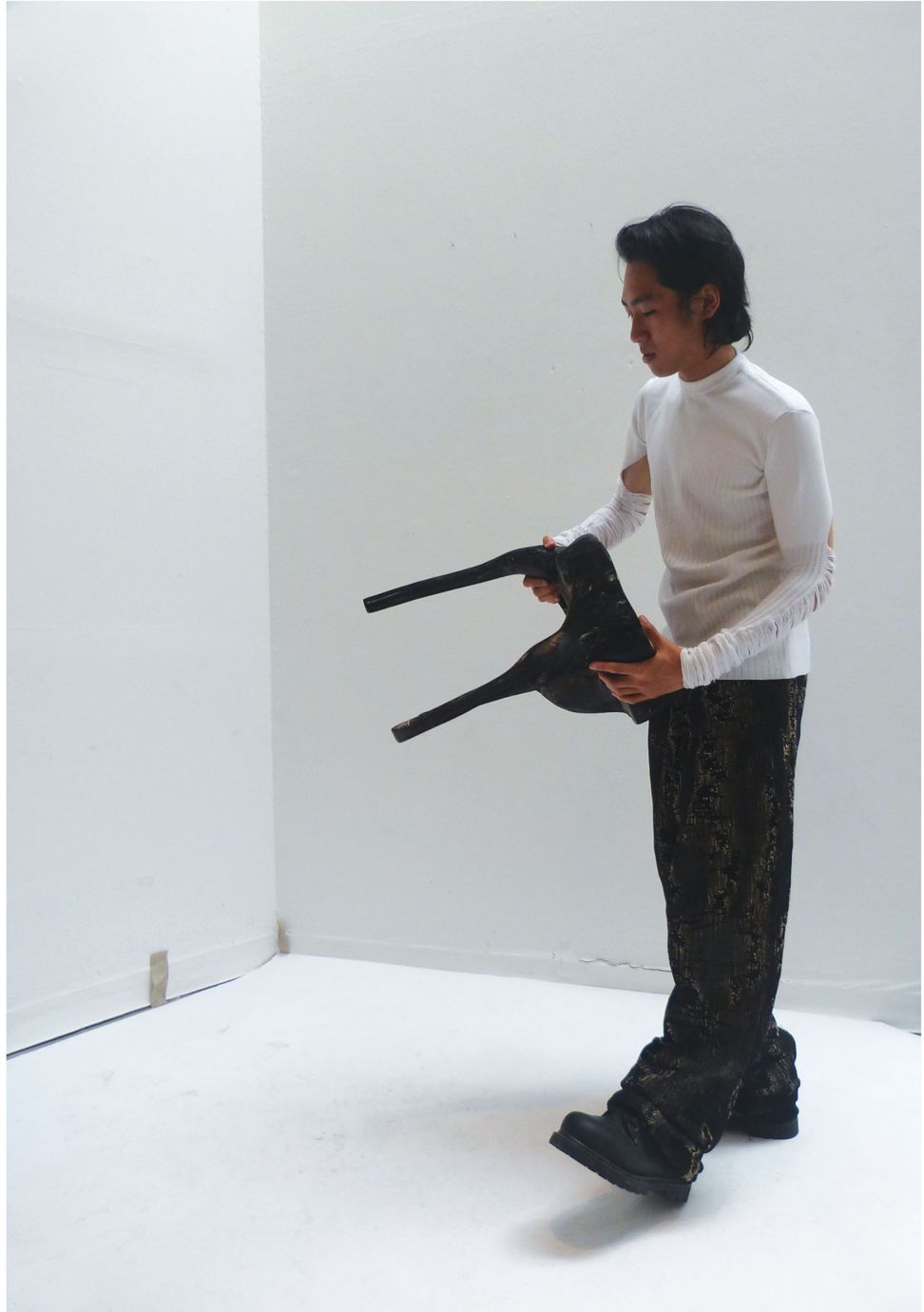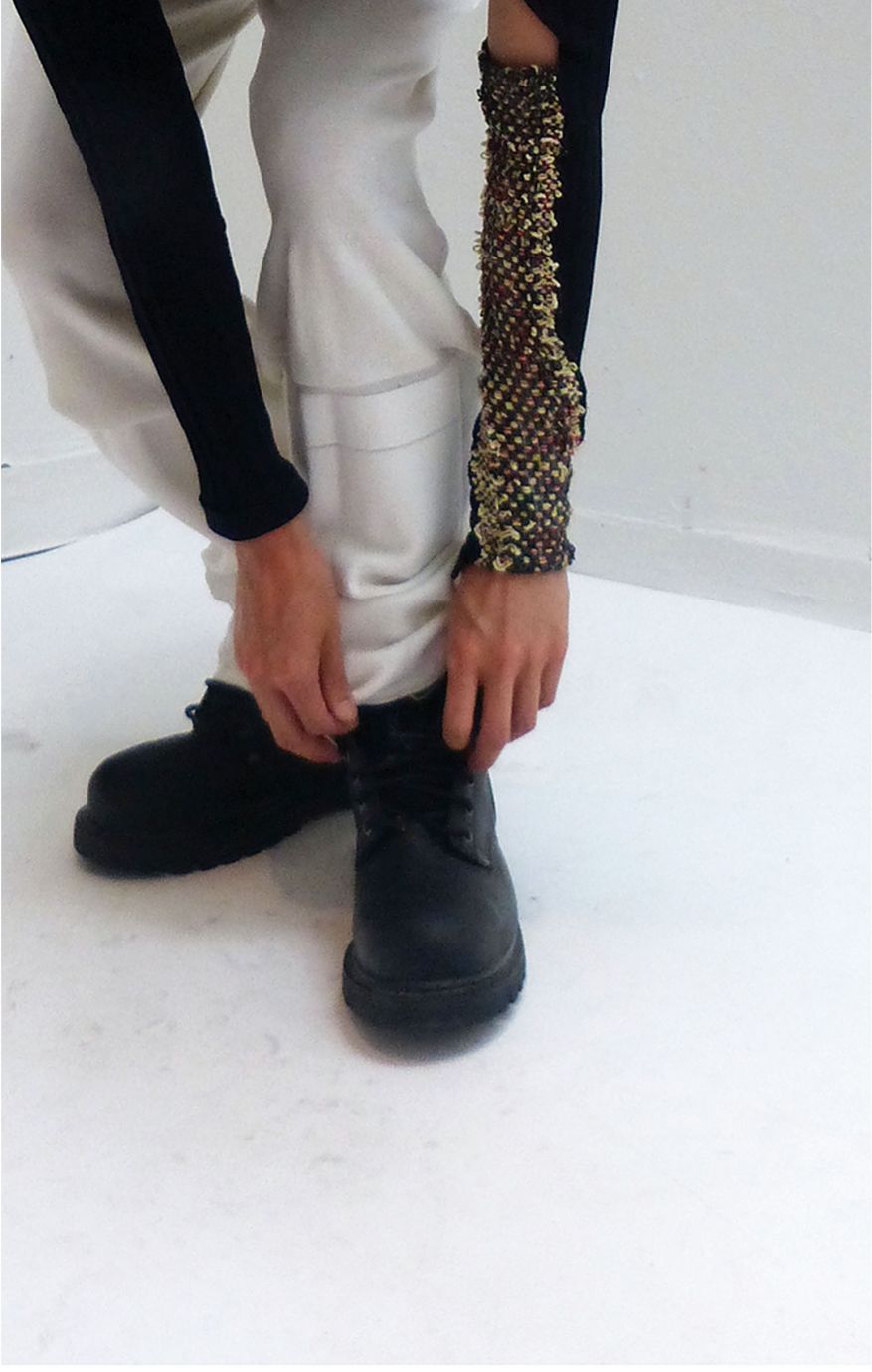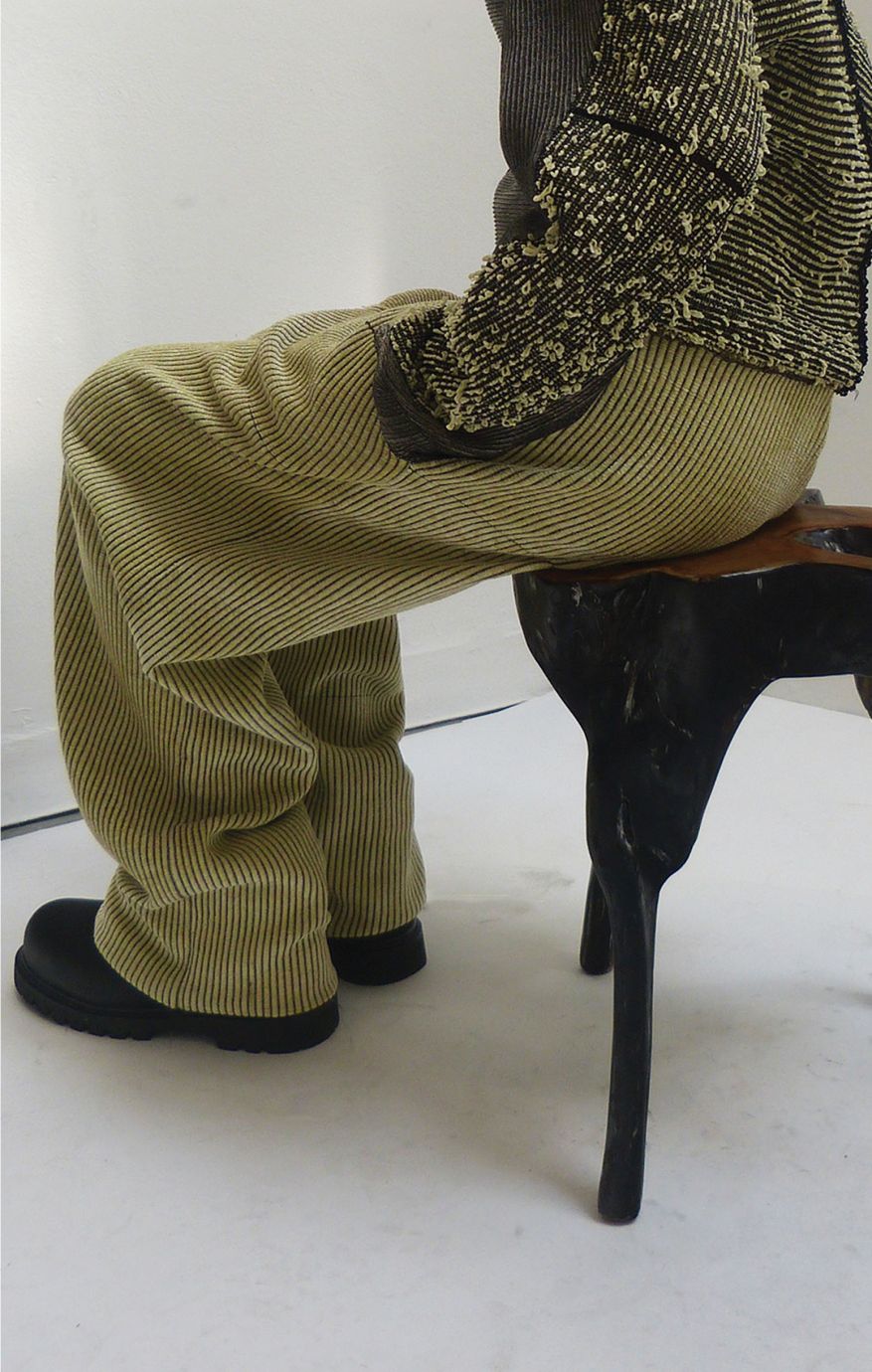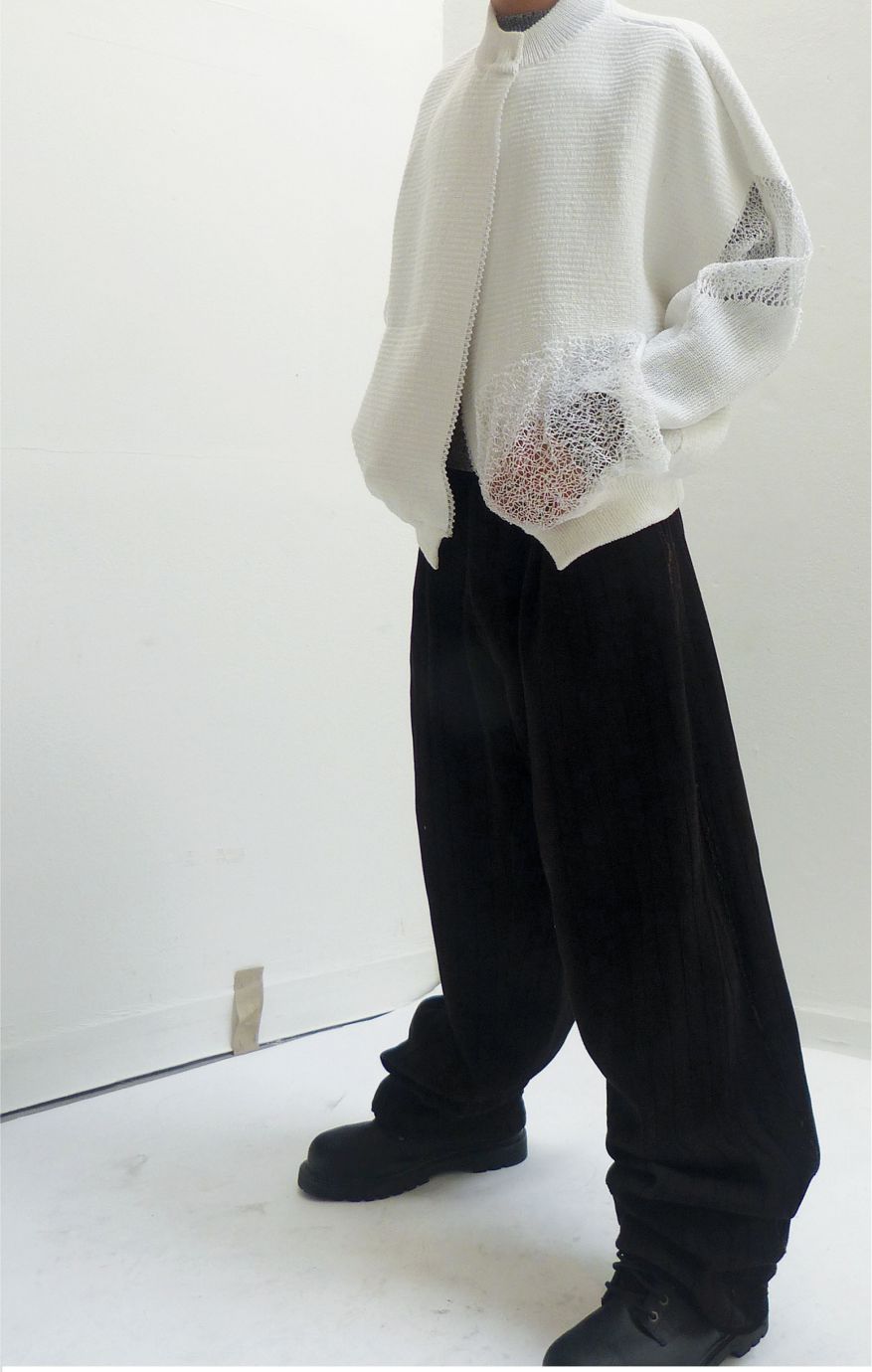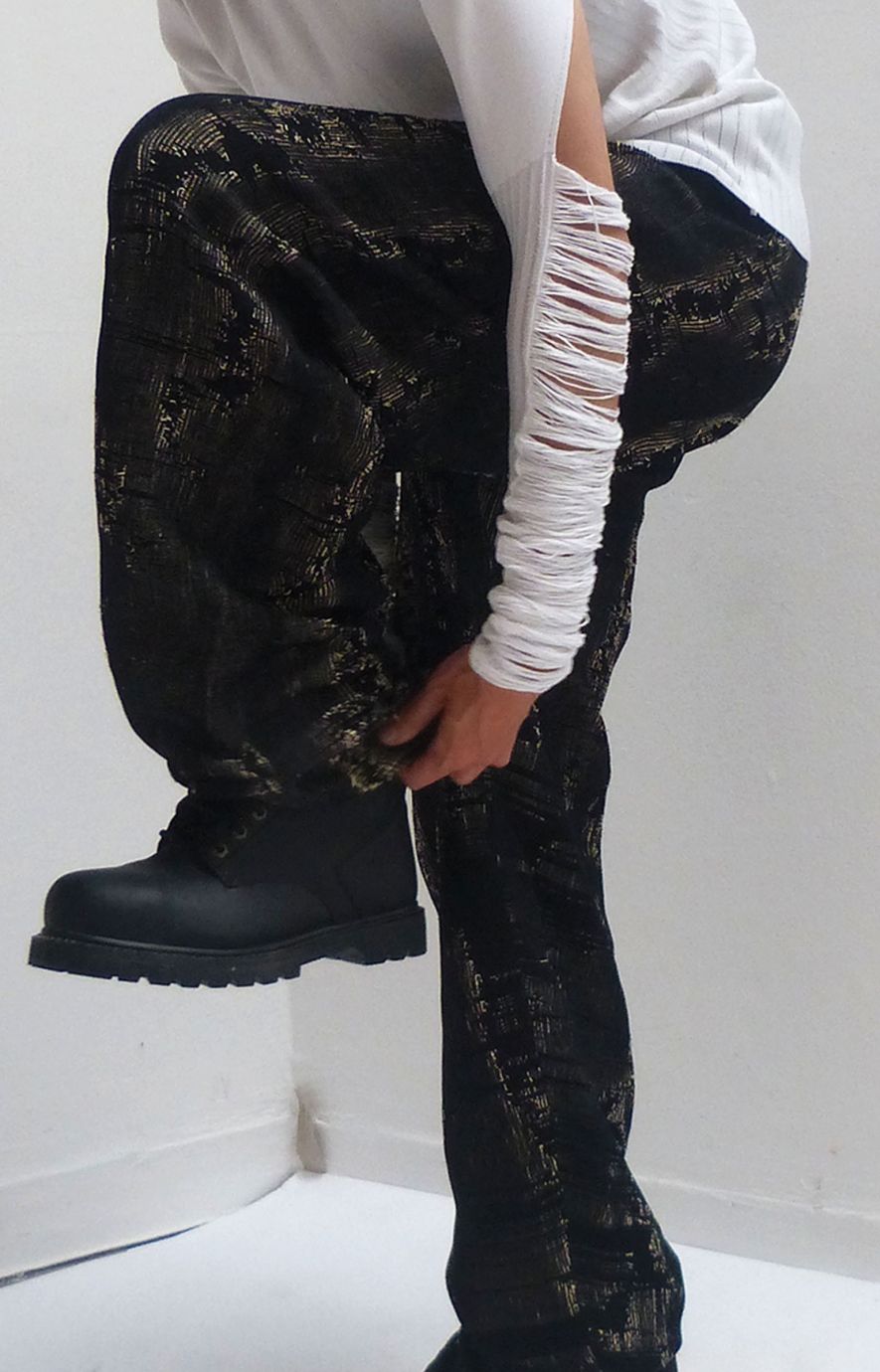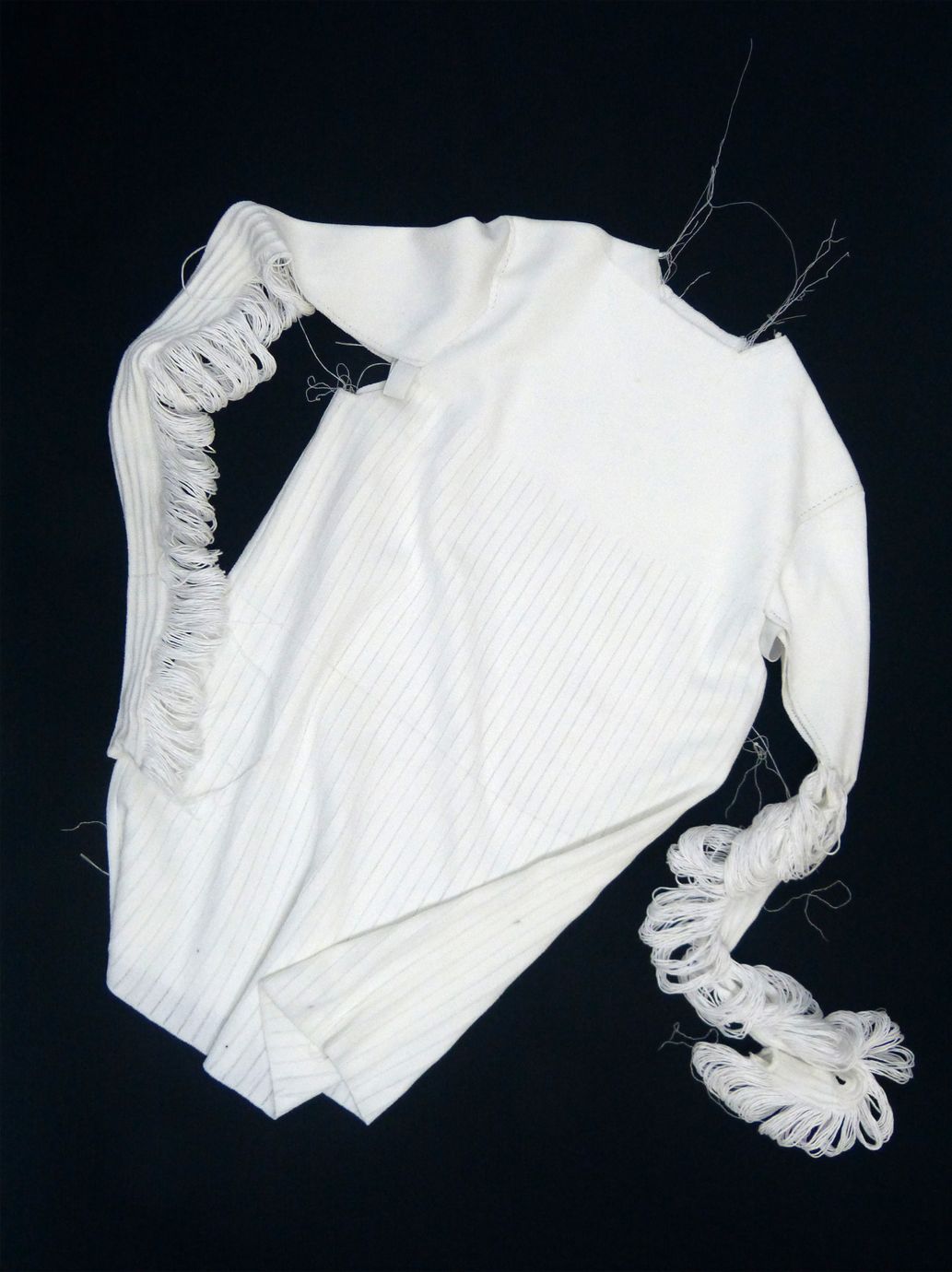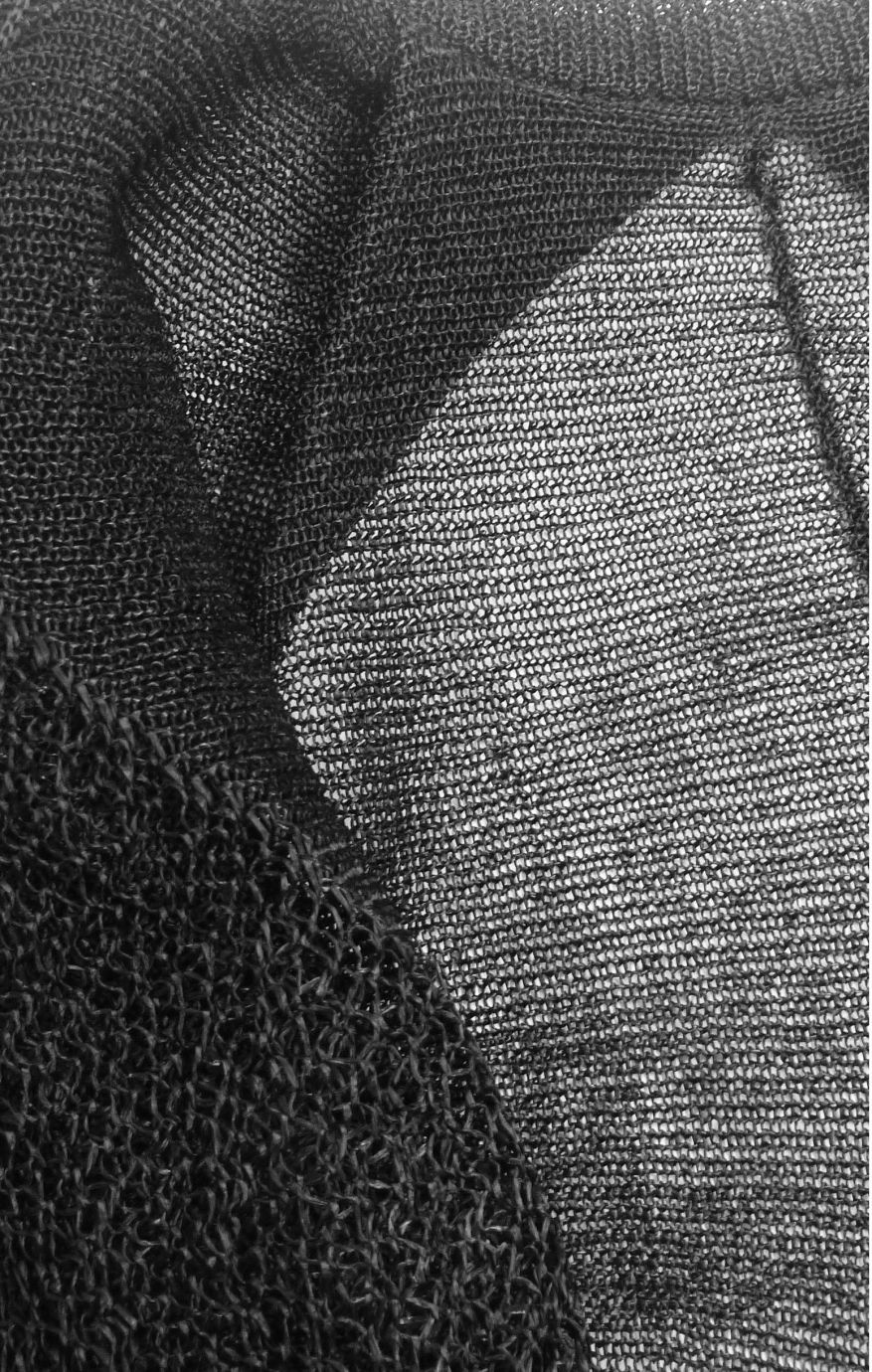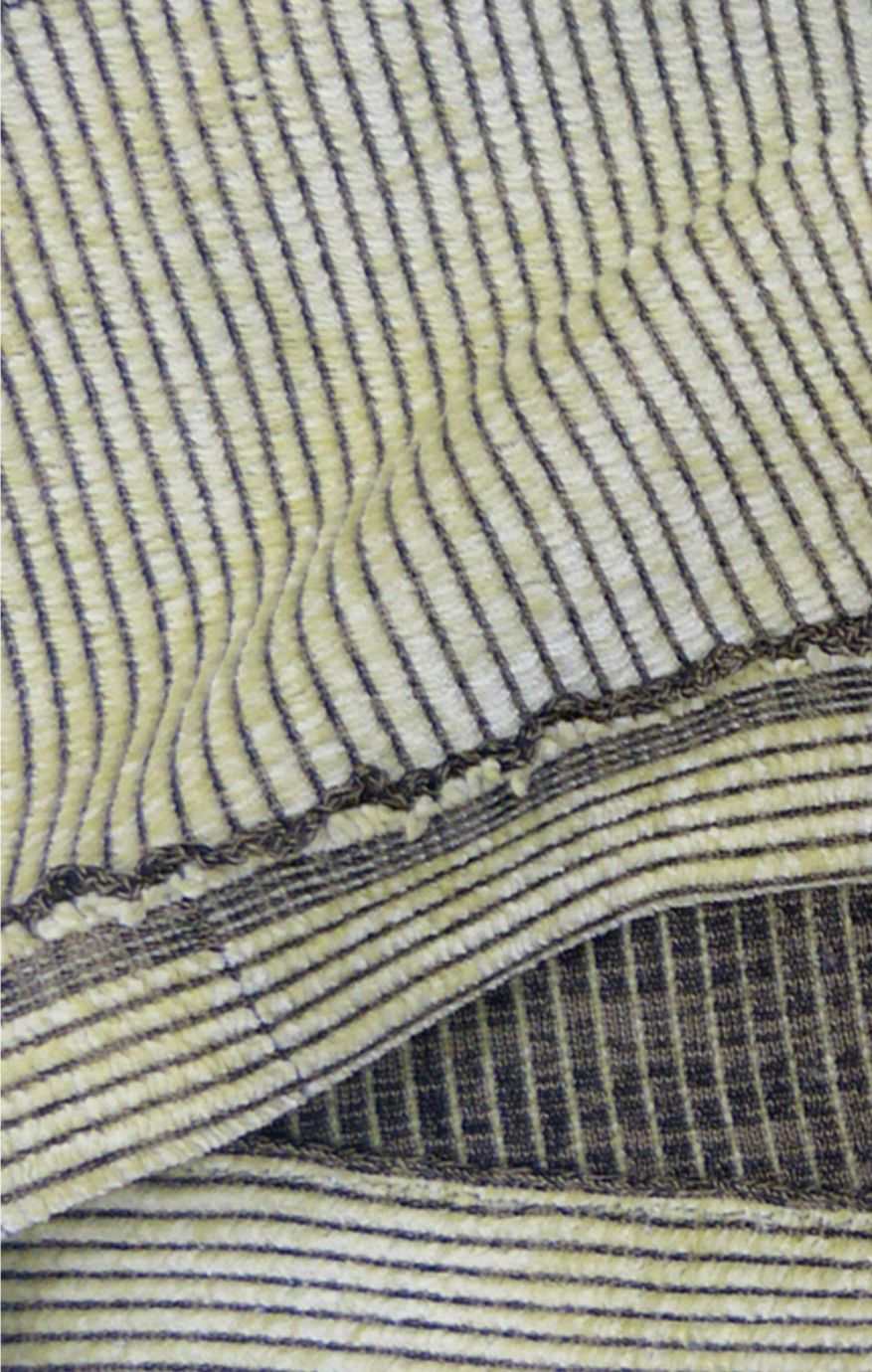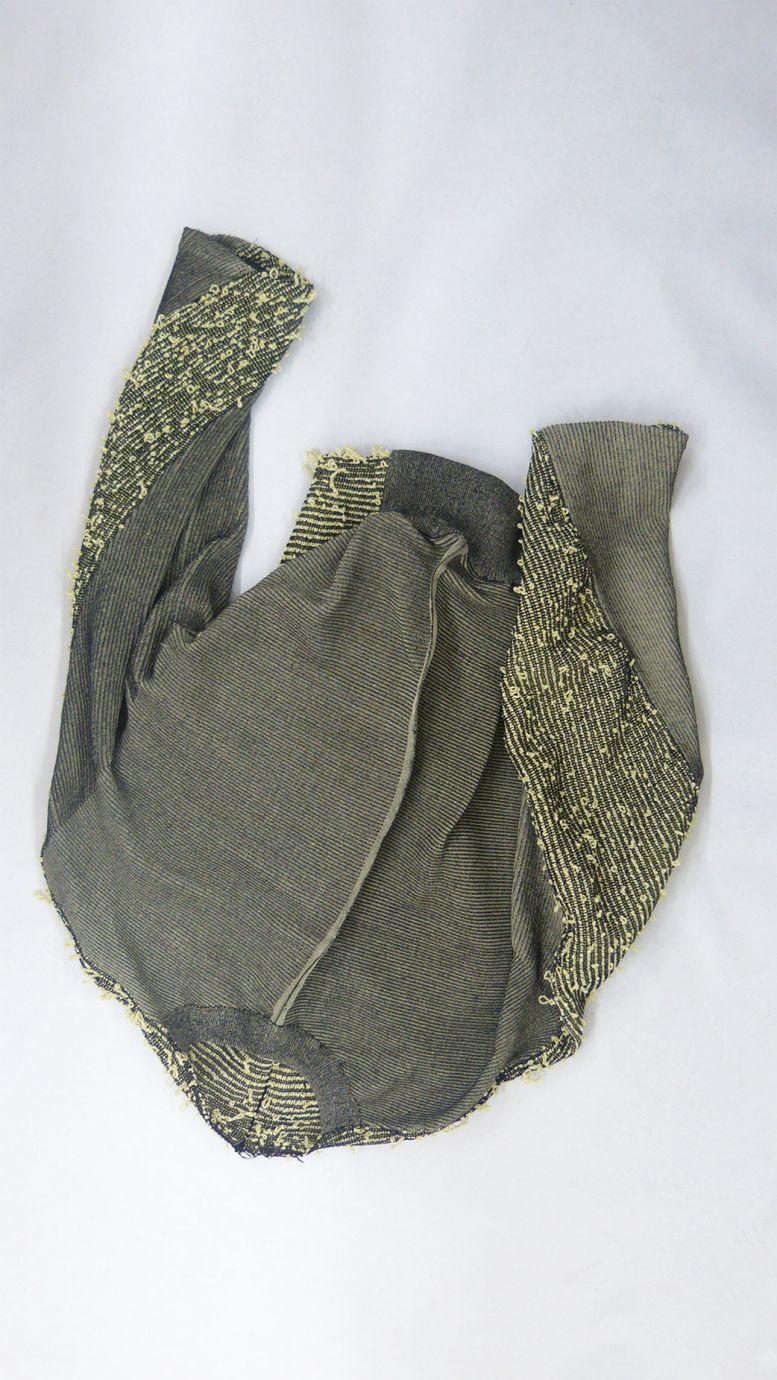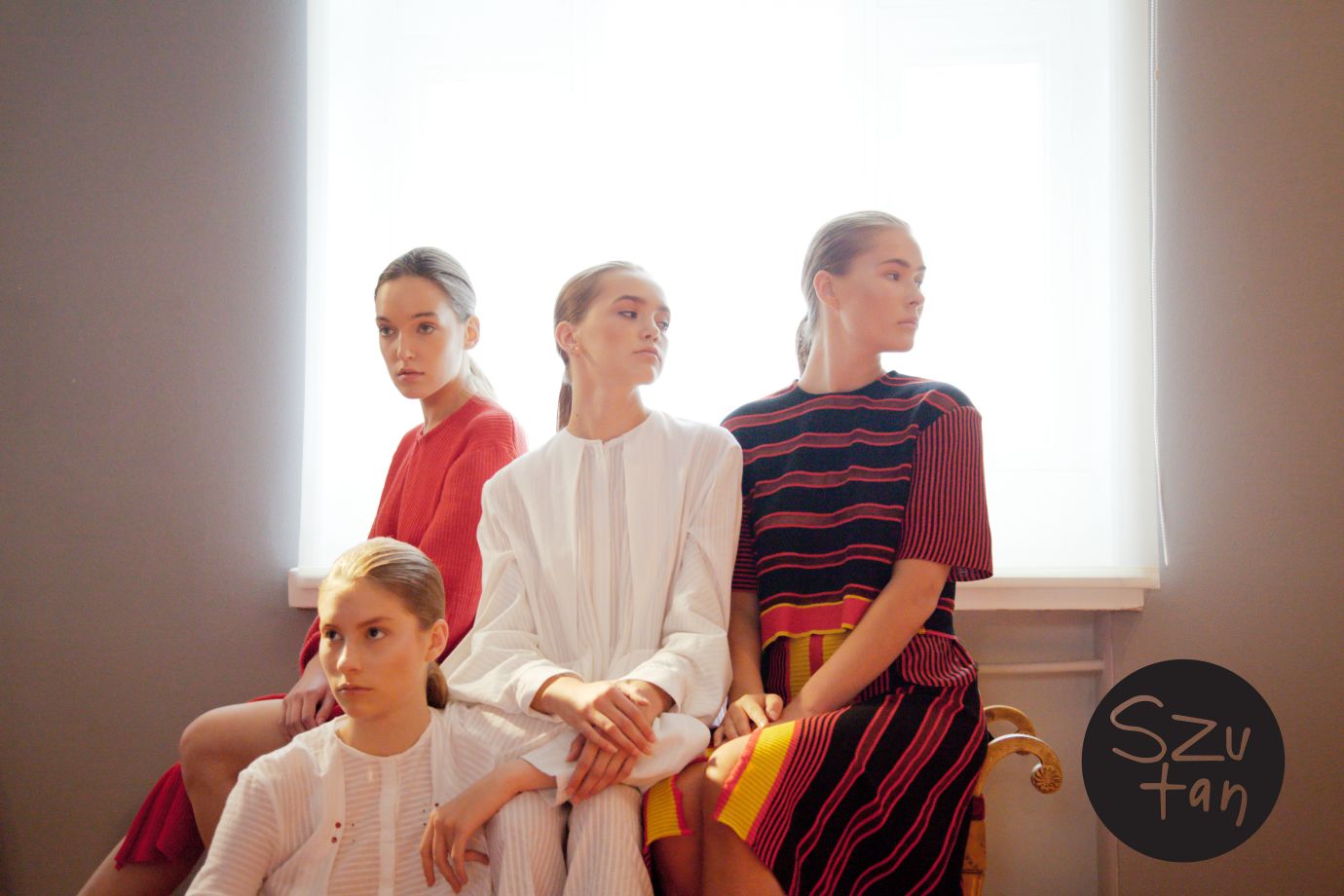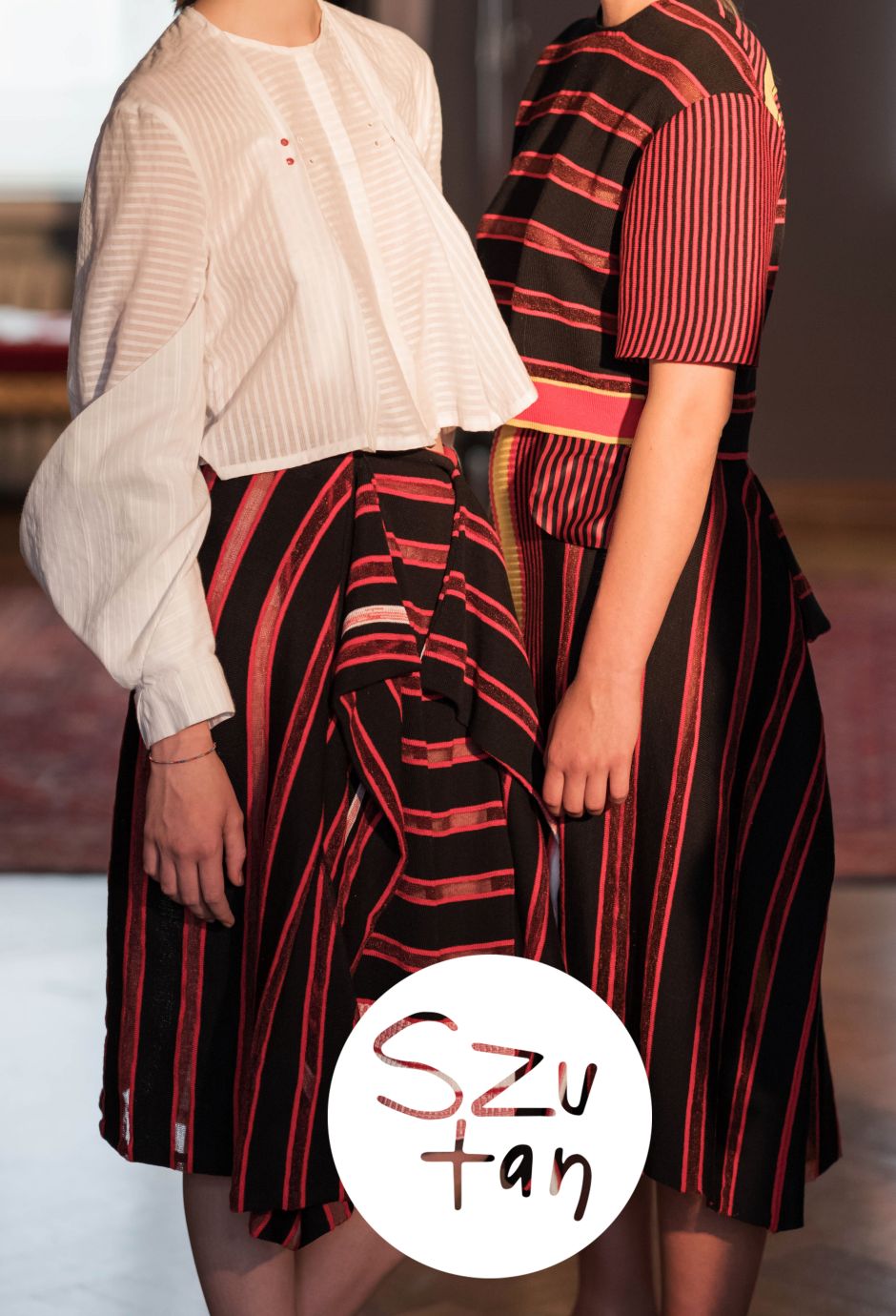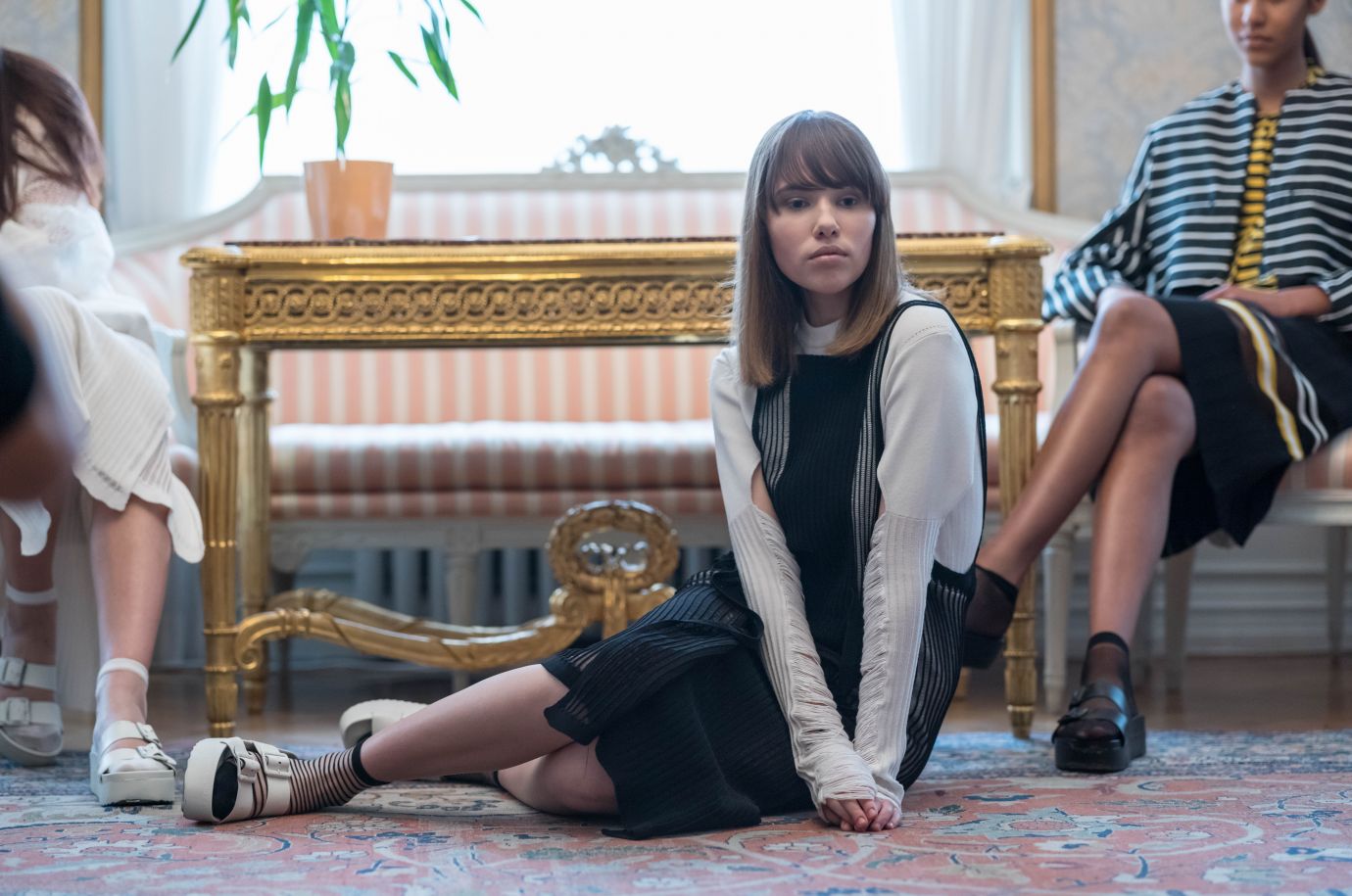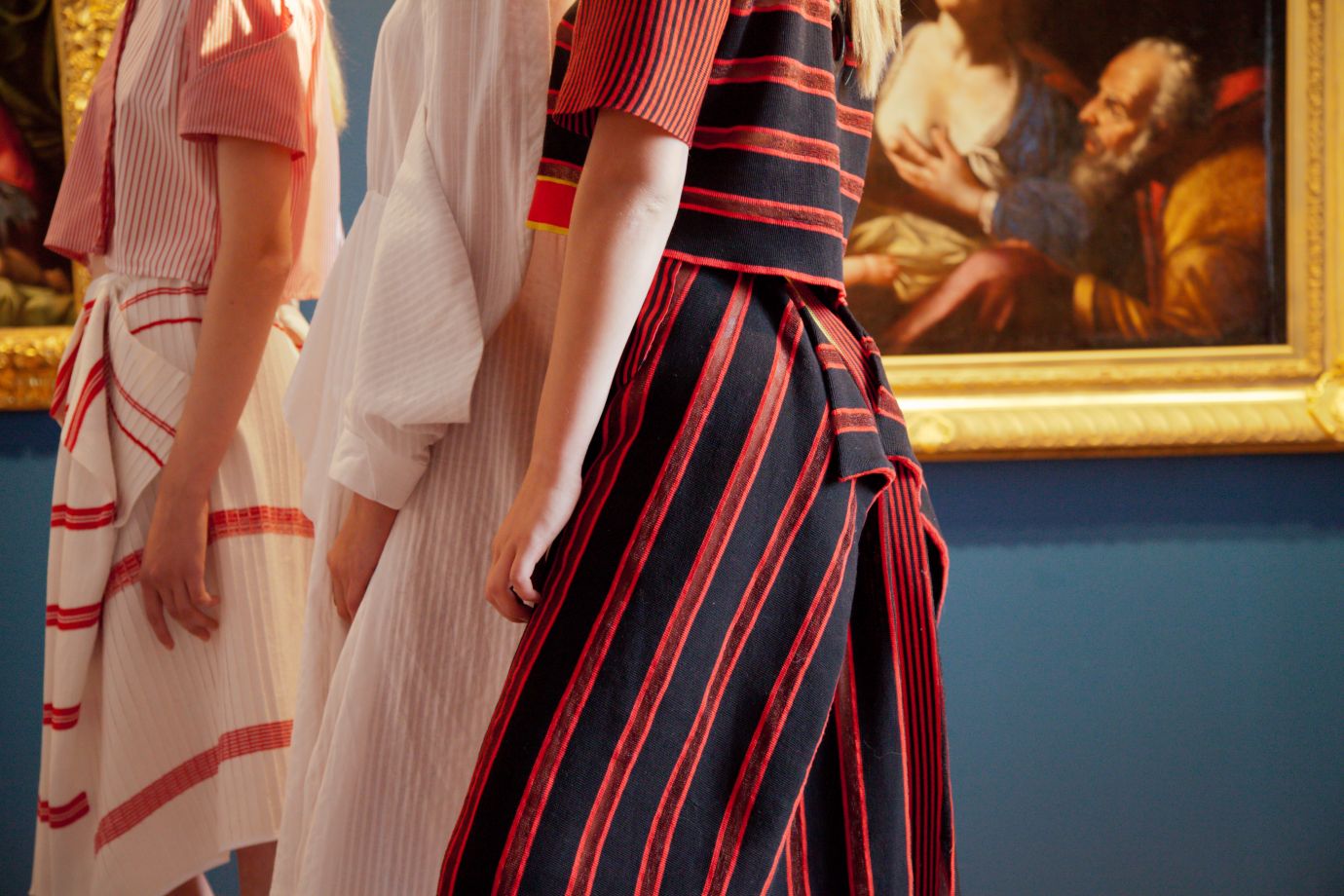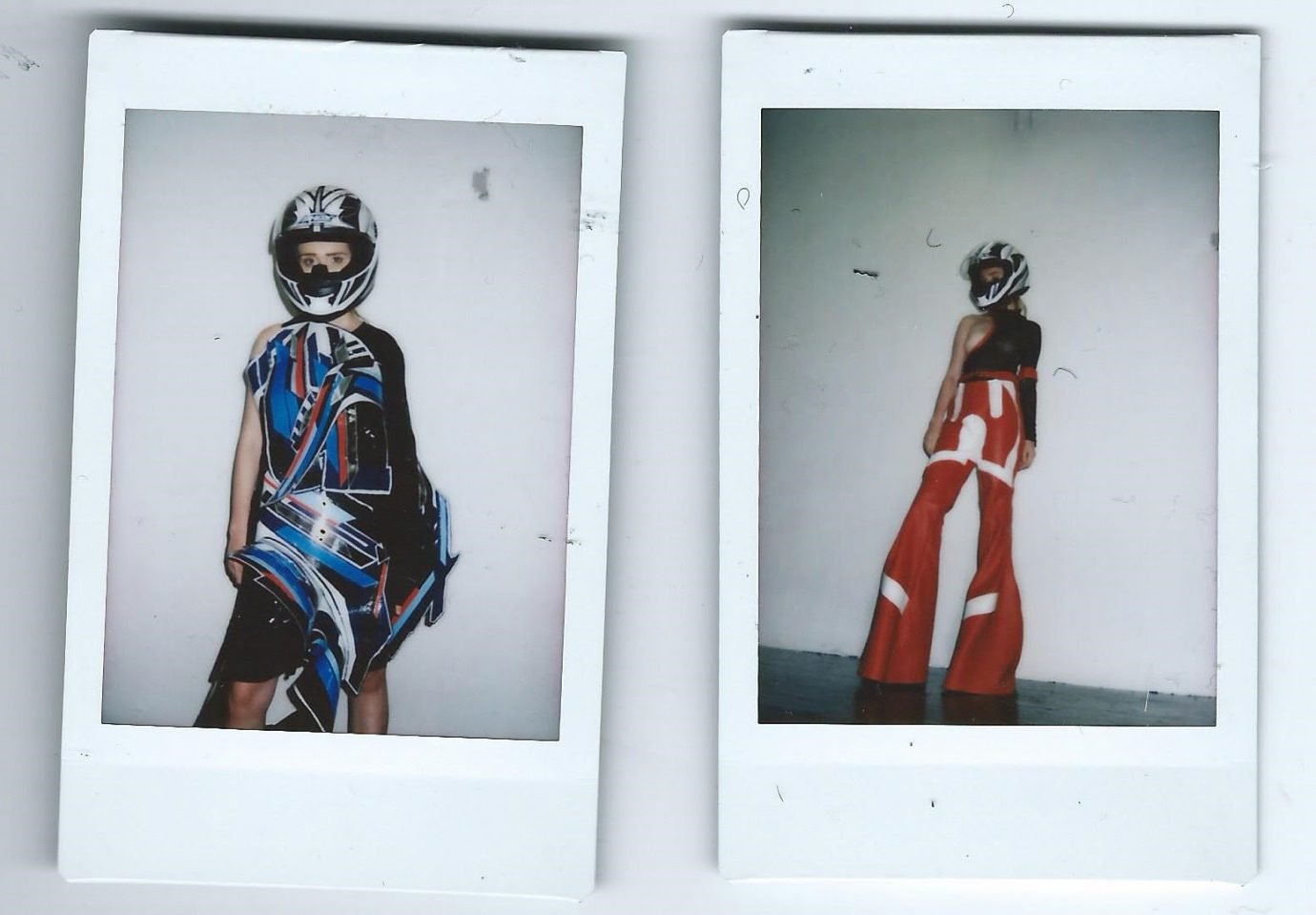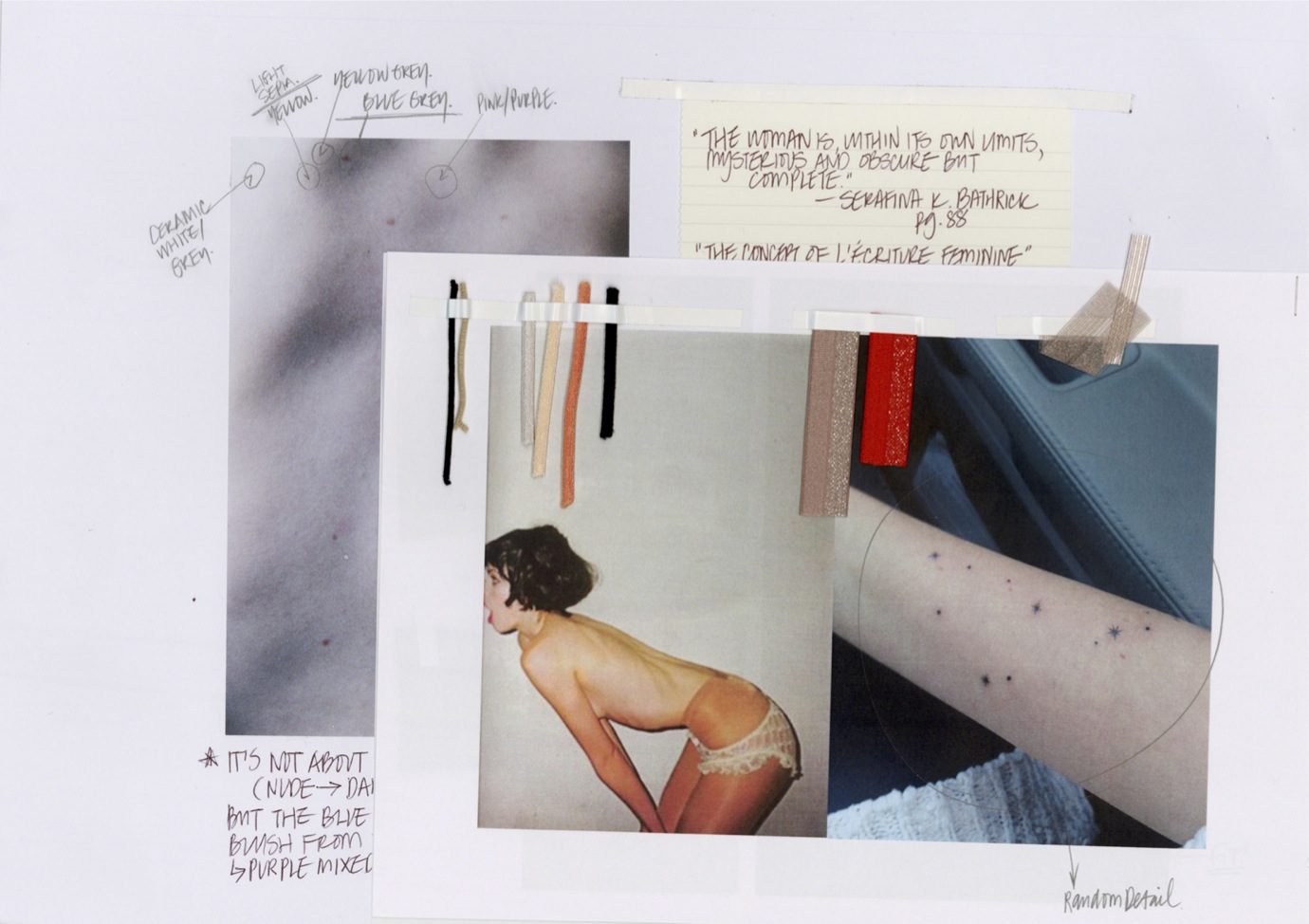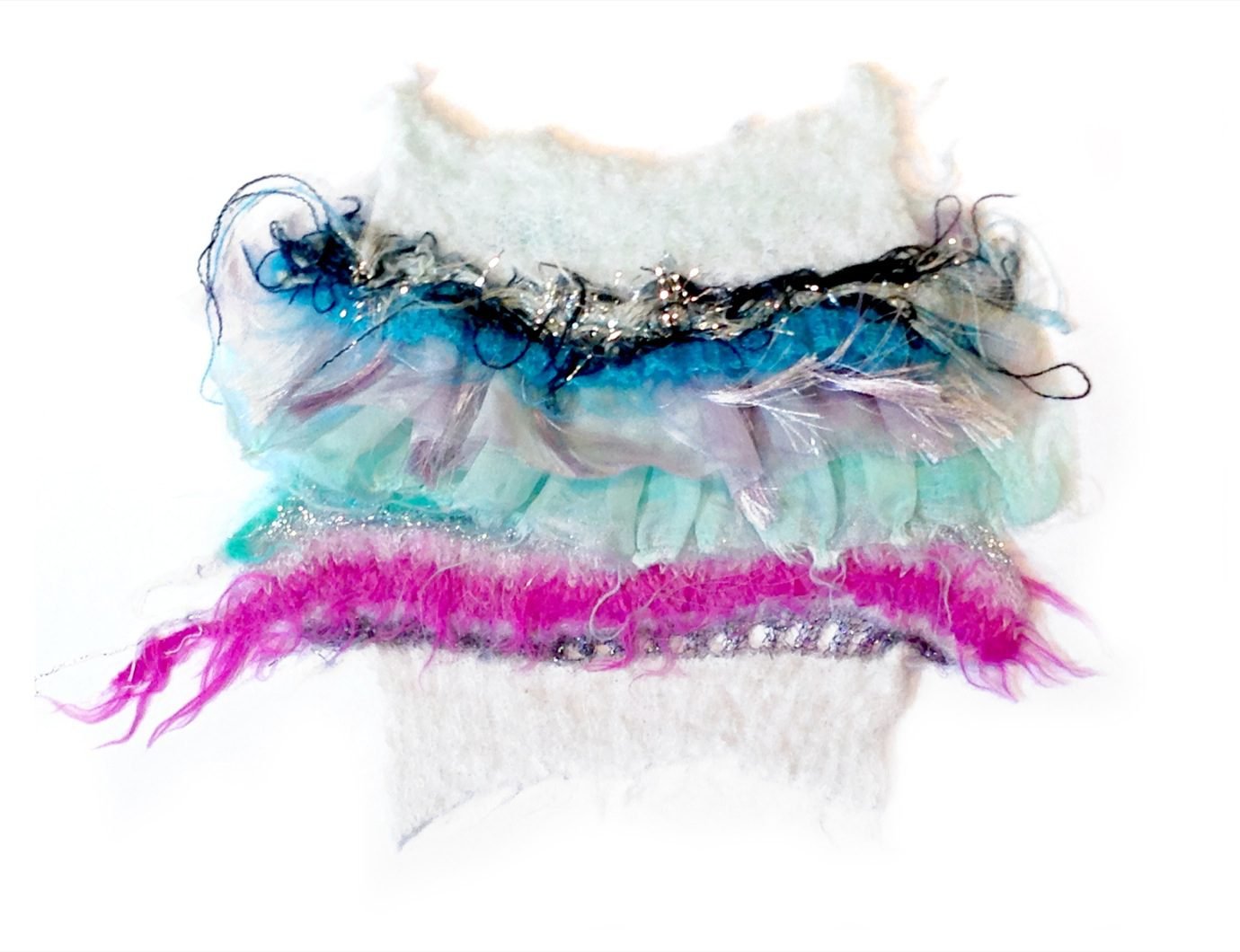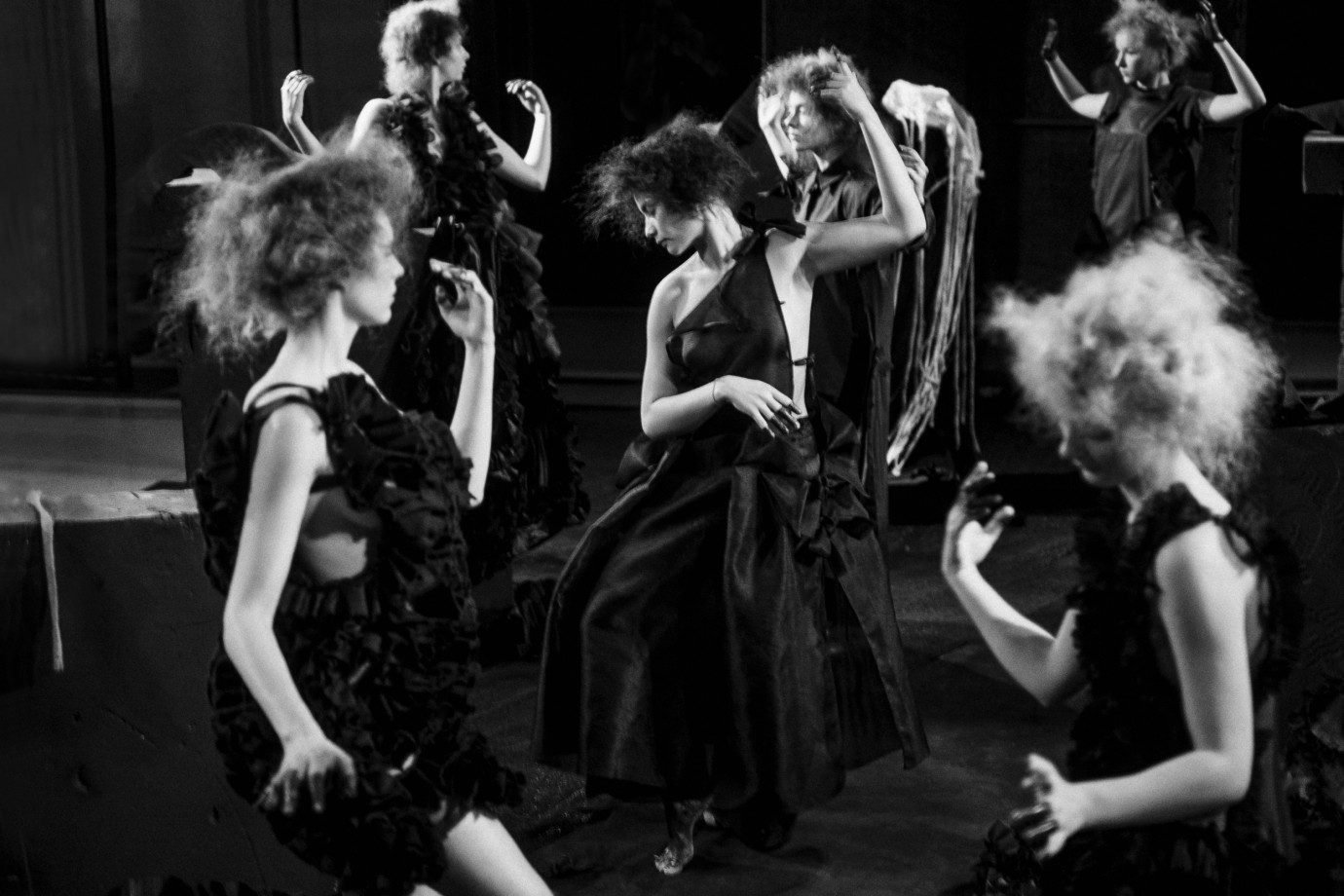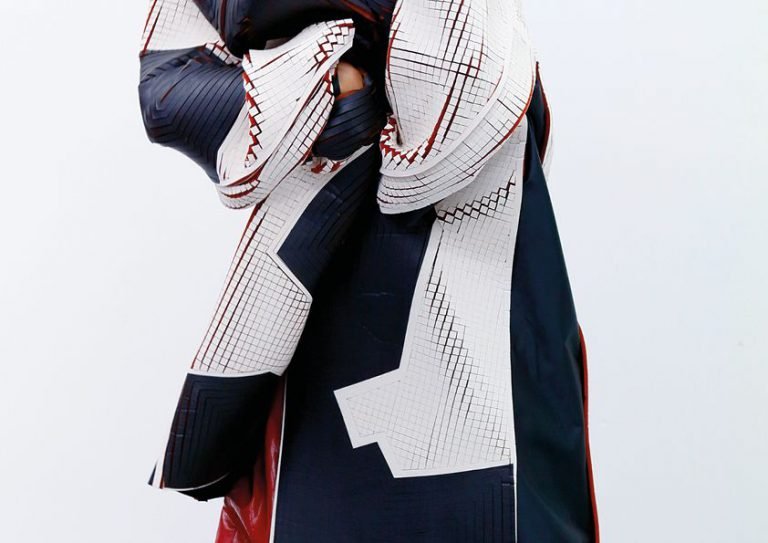Richard, why knitwear from the beginning?
When I started my BA in Textile Design at CSM, I began the course thinking I was going to be a print specialist. But as I tried other pathways I found knit more challenging and endearing. I had also recently inherited two domestic knitting machines from my Grandmother. There is something about making a fabric from scratch, you are in complete control of the design, colour, handle and texture. Changing stitch or swapping/combining yarns, you begin to realize that the physical form of what you are making can be integrally defined by the materials and techniques you adopt to create it. I find it really authentic.
What was your biggest challenge while studying the MA at RCA?
My biggest struggle was coming from Textile Design BA into a Fashion Design MA. In my first year at the RCA I felt like a fish out of water and was too embarrassed about my lack of ability in cutting/draping to ask for help. I had a solid grounding in knit technique and knowledge of fibres and materials but whenever I tried to create a 3D form it looked so contrived. In the end I realized that I had to play to my strengths and work within what I knew, which was creating imaginative fabrics with unusual finishings and details and build everything up from there.
What music did you listen to while creating your graduation collection?
Machine knitting requires full concentration so putting your headphones on to block out any external factors really helps. I was generally listening to instrumental music which I find more ambient, helping me find my flow: Robert Glasper, Burial, Miles Davis, Cinematic Orchestra, Badu, Bonobo.


